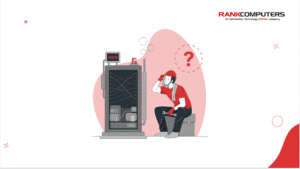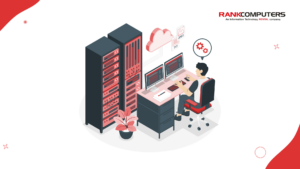As more people become conscious of our planet’s health, they’re looking for companies to step up and go green. Recent research from Deloitte found that 27% of companies are taking charge by setting targets to cut down on their carbon emissions and promote sustainability.
At the same time, our digital world contributes nearly 1% of global greenhouse gas emissions, a clear signal that businesses aiming to be responsible need to act fast. That’s where switching to rental solutions comes in.
Switching from buying to renting IT equipment can actually make a big difference in reducing your carbon footprint. In this blog, we’ll delve into the excellent benefits of renting over buying IT equipment, not just for your business but for the planet too.
Extending Product Life Cycle
Have you ever wondered that simply using your computer for an extra year could reduce its carbon footprint by almost 30%? It’s a surprising statistic that highlights the importance of small changes.
Consider this: instead of throwing out old or rarely used devices, you can rent them out to other businesses, giving these devices new life. This approach not only extends the operational cycle of gadgets but also contributes significantly to lowering your environmental impact. By renting, businesses can effectively extract the most value from the resources and energy invested in creating these devices.
Additionally, you are reducing the need for more production, which directly translates to less waste generated. It’s a step towards a more sustainable world in which giving our gadgets a second chance through renting can make a huge impact.
Reducing E-waste through Responsible Rental Practices
The mounting challenge of electronic waste, or e-waste, poses a significant threat to our environment due to its vast production and non-biodegradable nature.
💡 An estimated 50 million metric tons of e-waste are generated globally each year.
However, businesses have a sustainable solution at their fingertips: embracing reuse, renting, or leasing existing equipment instead of perpetuating the cycle of new purchases.
By adopting this approach, companies can lease devices for specific periods and then return them to rental providers for subsequent use by other enterprises. This not only reduces the carbon footprint but also substantially reduces waste generation. Through extended equipment utilisation via rentals, you not only combat pollution but also promote the preservation of our environment.
Sharing is Caring For the Environment
Imagine a scenario where a hundred individuals rely on a single shared server, rather than a hundred separate servers. The outcome? A substantial drop in energy consumption and emission rates per person.
A company’s external carbon footprint could be significantly reduced by implementing the sharing principle, whether through shared servers or widely used technology like laptops and tablets. Lower energy costs are yet another advantage of sharing. When using shared IT equipment, maintenance costs are split among many users, resulting in lower overall energy costs.
Conserving Natural Resources
The production of electronic devices involves mining and processing of raw materials, energy-intensive manufacturing processes, and transportation, all of which contribute to the environmental footprint associated with technology production.
By opting for rentals, businesses can reuse existing equipment like older laptop models or monitors. This practice significantly trims the carbon footprint that accompanies the manufacturing of new devices. When overall demand for new devices go down, it also lowers the rate of production and leads to conservation of essential resources.
Embracing a Path to Sustainability
As we strive for corporate sustainability, the decision to incorporate energy-efficient IT equipment rentals takes on a significant role in our commitment to reduce our carbon footprint and safeguard the environment. At Rank Computers, we offer a diverse range of rental options, businesses can actively participate in creating a more environmentally friendly future while also benefiting from the latest technological advancements.
By working hand in hand, we have the potential to make meaningful progress towards a greener and more sustainable tomorrow.



